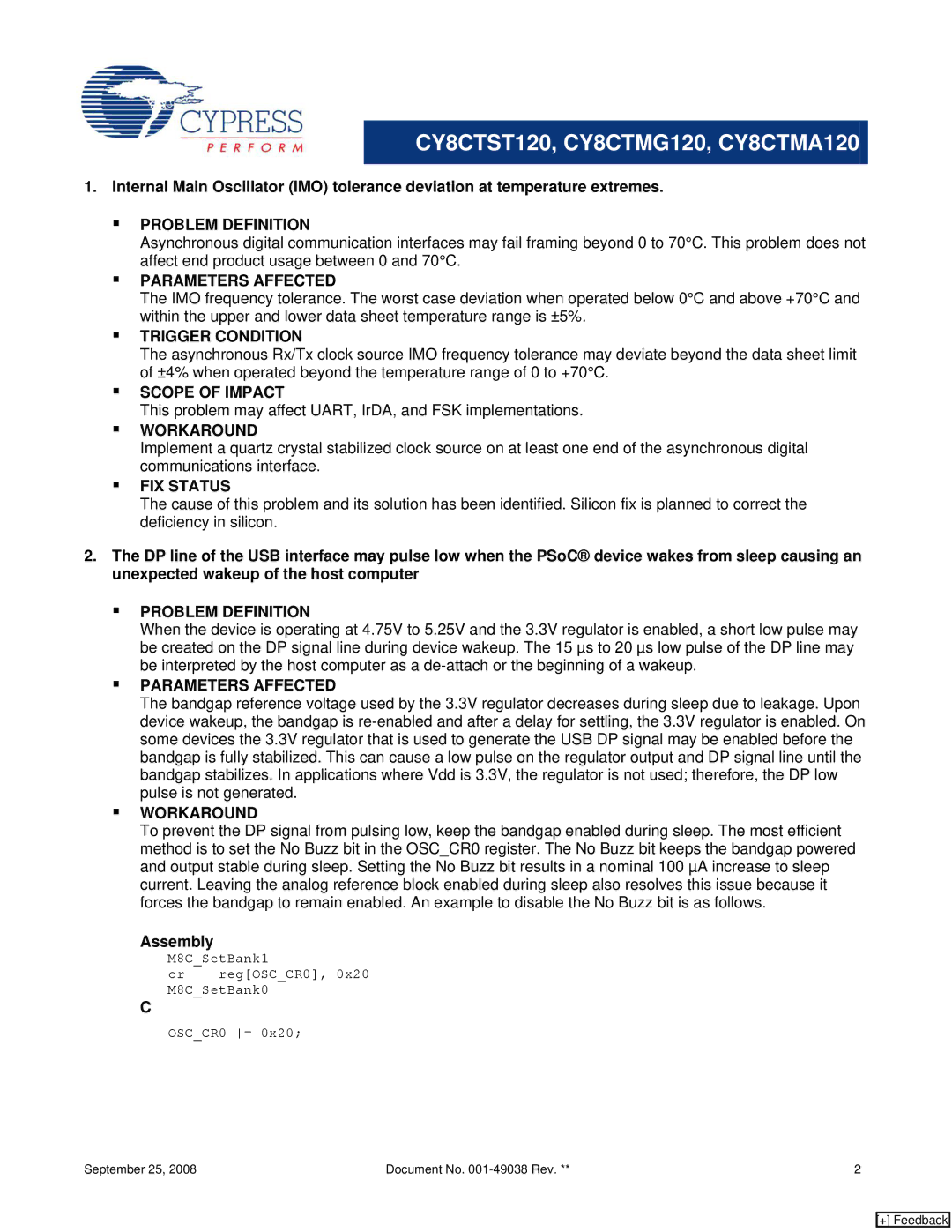CY8CTMG120, CY8CTST120, CY8CTMA120 specifications
Cypress Semiconductor, a renowned name in the semiconductor and microcontroller market, offers a range of advanced touchscreen controllers, including the CY8CTMA120, CY8CTST120, and CY8CTMG120. These devices are designed to cater to various applications, making touchscreen interfaces more responsive, reliable, and user-friendly.The CY8CTMA120 is known for its advanced touch sensing capabilities, supporting multiple touch points with high accuracy. This device utilizes Cypress's CapSense technology, which is renowned for its noise immunity and smart filtering, enabling it to distinguish between genuine touches and environmental noise. This makes it suitable for applications requiring high sensitivity, such as consumer electronics and handheld devices.
The CY8CTST120, on the other hand, is targeted at applications that require robust touch performance in harsh environments. It features enhanced moisture and dirt tolerance, crucial for outdoor and industrial applications. The touch controller’s built-in self-test functionality ensures that the system is always operational, providing peace of mind for manufacturers and users alike.
The CY8CTMG120 stands out with its low power consumption, making it ideal for battery-operated devices. This controller combines excellent touch performance with energy efficiency, allowing manufacturers to create long-lasting devices without sacrificing responsiveness. Its flexibility in design also supports various screen sizes and shapes, enabling creative freedom for product designers.
All three controllers leverage Cypress’s SmartSense technology, which automatically adjusts sensitivity based on the environment, ensuring optimal performance. With integrated support for Gestures, the devices enable multi-touch capabilities that enhance user interaction and experience.
Each of these devices is compatible with Cypress’s PSoC Architecture, providing an extra layer of flexibility for developers. They allow for the integration of additional functionalities directly on the chip, reducing the need for external components and simplifying the design process.
Moreover, all models support a wide voltage range, ensuring versatility across various battery types and voltages. Their compact design and ease of integration make them suitable for a wide range of applications, from home automation to automotive interfaces. Overall, the CY8CTMA120, CY8CTST120, and CY8CTMG120 touchscreen controllers exemplify Cypress Semiconductor's commitment to innovation and excellence in touch technology, empowering manufacturers to create intuitive and engaging user interfaces.

